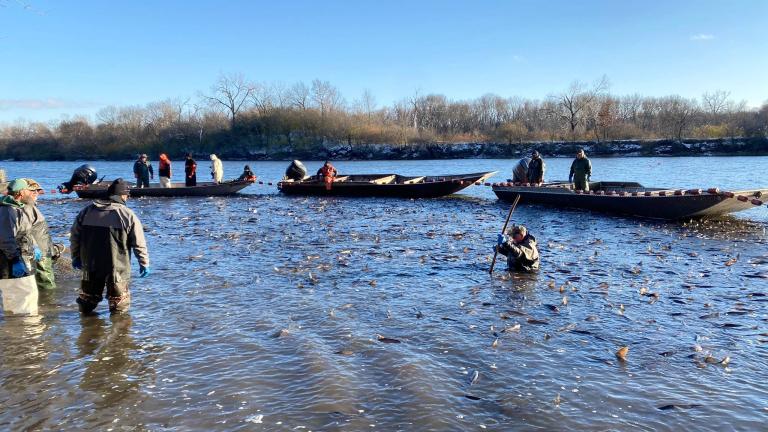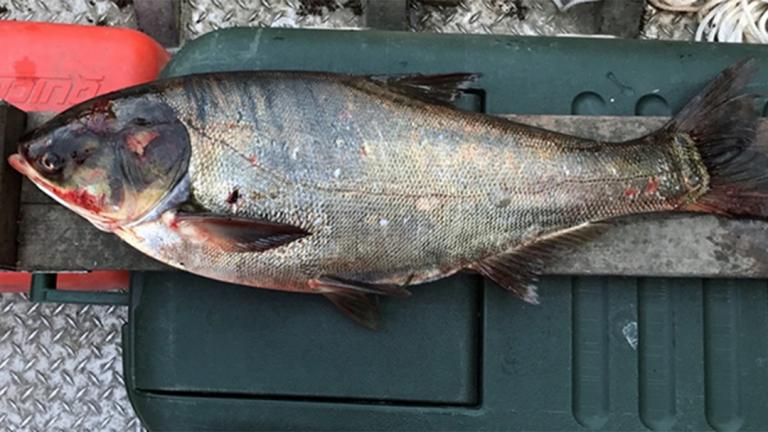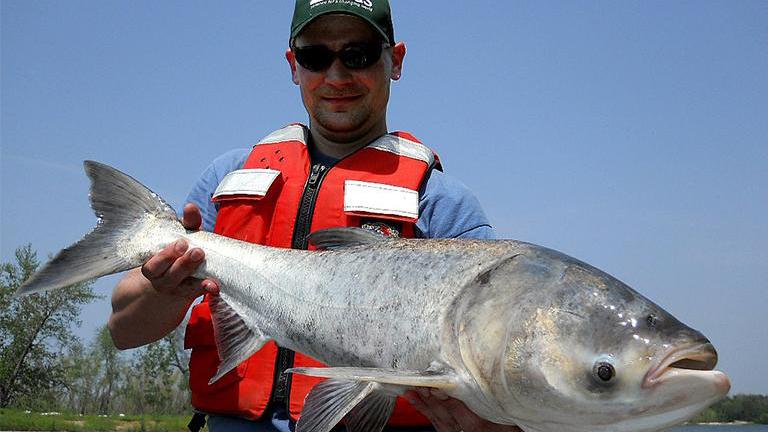A project to help prevent invasive carp from reaching the Great Lakes is set to receive key federal funding.
The U.S. Army Corps of Engineers has allocated $225.8 million to the Brandon Road Lock and Dam invasive carp barrier. The funds will complete the planning and engineering phase of the project.
“The announcement of funding is huge and really exciting, $225 million is a lot of money… The faster we act, the better. So this money can’t come soon enough,” said Margaret Frisbie, executive director of Friends of the Chicago River.
The funding will allow the U.S. Army Corps of Engineers to complete its planning and begin construction. The spending was made possible by the recently passed Infrastructure Investment and Jobs Act.
“This latest investment stands as a significant milestone for this particular project … What this funding does is it gives us the ability to start driving forward toward actual construction,” said Col. Jesse T. Curry, commander of the Rock Island District of the U.S. Army Corps of Engineers.
The project is designed to prevent invasive carp from reaching Lake Michigan and entering the Great Lakes basin.
“They’re voracious eaters,” Frisbie said. “That basically means that they eat so fast and grow so fast that they outcompete native species.”
The invasive carp could devastate both the area’s biodiversity and the region’s economy, said Marc Smith, policy director at the National Wildlife Federation.
“It would decimate the economic vitality of the region, commercial sport fishing (by) $7 billion annually. The boating industry alone is a $15 billion industry. We are talking about a mega economic engine that could be completely rattled by carp,” Smith said.
Near Peoria, many parts of the Illinois River have been taken over by the invasive fish.
Frisbie said much is at stake for Chicago’s river system — including the Calumet and Chicago rivers — which is already in recovery.
“There’s a lot of conversation about what would happen to the Great Lakes, but the bigger picture is what would happen to our aquatic environments,” Frisbie said. “We know in the Mississippi and the Illinois Rivers that invasive carp species that are here are disrupting the ecosystems.”
The two biggest obstacles for the project are how to build the barrier and how to fund it, Smith said.
Curry said they are still working to determine the best way to build the barrier.
“Where we currently stand in engineering and design is evaluating a variety of different technologies from electric barriers to bubblers to acoustic deterrents, and determining how in this nationally unique project, those working together can reduce or eliminate the ability for an invasive species to make it through a particular location like this,” Curry said.
The other obstacle: funding. It’s estimated to cost around $850 million, though it could be just about $800 million, Smith said. Right now, Illinois is supposed to foot 20% of the bill.
“If it’s $850 million, the state of Illinois is on the hook for 20% of that, so [around] $250 million … and that’s just not going to happen at this point,” Smith said.
Michigan and Illinois have contributed some funding for the barrier’s planning and engineering. But in December, a coalition of Great Lakes governors, including Gov. J.B. Pritzker, signed a letter stating they need support from the federal government.
Smith says the funding recently announced buys some time for the rest of the cost to be figured out, while still allowing the project to move forward.
“It’s the only project right now that’s moving. There’s no Plan B, there’s no Plan C. We’re all in on this,” Smith said.







